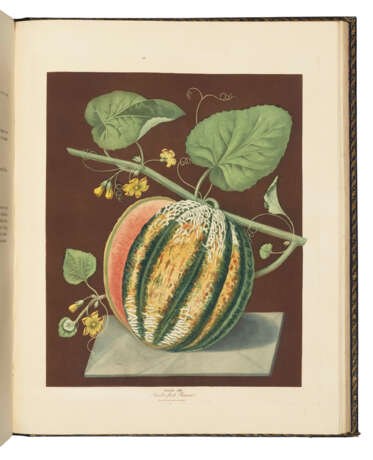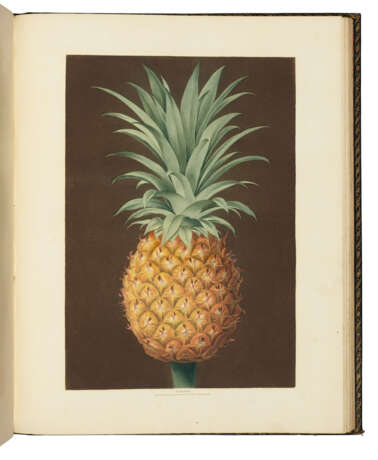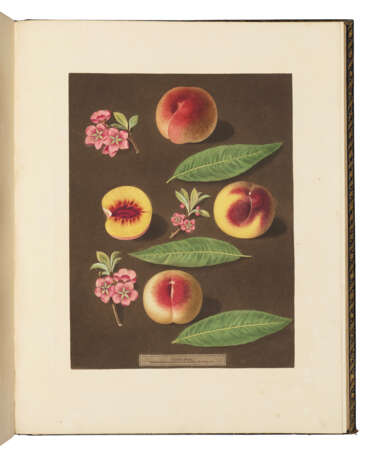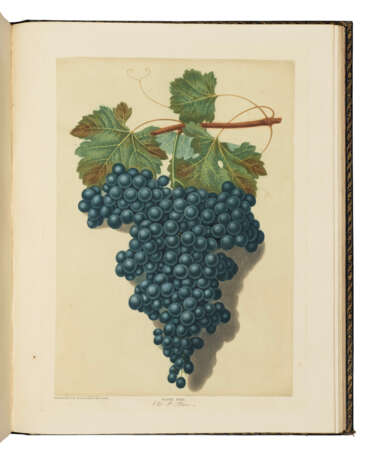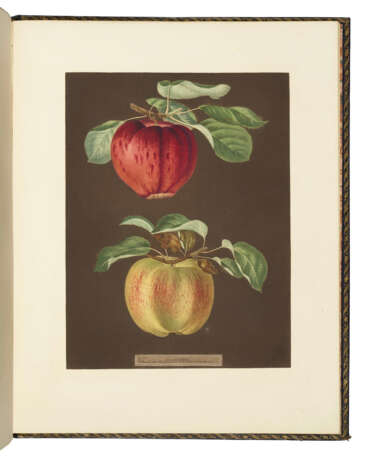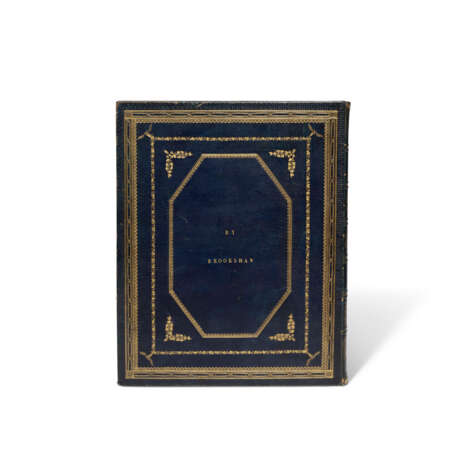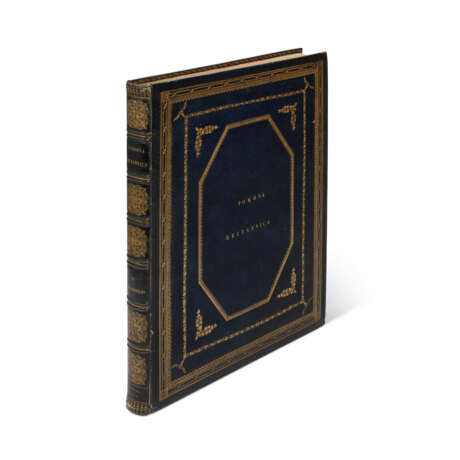ID 1105678
Los 130 | BROOKSHAW, George (bap. 1751-1823)
Schätzwert
£ 40 000 – 60 000
Pomona Britannica; or, a collection of the most esteemed fruits at present cultivated in this country. London: Printed for the author by T. Bensley, published by White, Cochran, and Co, and W. Lindsell, 1812.
A splendidly bound copy of the most lavish work on fruit ever printed and ‘the only fruit book to rival the showy quality of the flowers in Thorton's Temple of Flora’ (Sandra Raphael, Oak Spring Pomona, p. 104). The Pomona marked the re-emergence of George Brookshaw into the public eye after a total disappearance of nearly a decade. Little had been known of Brookshaw's life until the 1990s when an article by Lucy Wood (‘George Brookshaw: The case of the vanishing cabinet-maker,’ Apollo, May 1991) uncovered many details in the remarkable story of a man who began his career as a celebrated cabinet-maker and died a relatively unappreciated botanical artist. His cabinet-making was of a high enough quality to attract the patronage of the Prince of Wales and other prominent members of society, being noted for its all-over painted decoration with figurative, landscape and, above all, floral themes. However, in spite of this success, no record survives of any furniture made by him after the mid-1790s. At this point, Wood suggests that a financial or sexual scandal drove him to live and work under a false name and precipitated his embarkation on an entirely new career.
The Pomona was issued in parts from 1804 to 1812 and, if Wood's hypothesis is correct, is the first resumption by Brookshaw using his own name, as well as the first public indication of his new métier. The complete work was dedicated to the Prince Regent, Brookshaw's most distinguished former patron. Almost decade in the making, an immense amount of planning necessary to coordinate the text and the plates. Brookshaw explains this in a note concerning the illustrations of the pineapples: ‘Before the first numbers of this work were printed, it was necessary to determine as nearly as possible, how many plates each class of fruit would occupy, in order that they should be properly numbered, and the author having consulted the most experienced growers of pines, was advised to give eight: but when he came to delineate them, he found there were not more than five or six worth growing... and in consequence has omitted three that were recommended.’ Thus text appears for ‘plates’ 39, 42 and 46, where no illustrations were included. Similar problems of co-ordination may explain why a number of the descriptions of plates of plums (for instance, of plates 19 and 21) do not tally with the actual illustrations, which may have been modified after the text was printed. Dunthorne 50; Nissen BBI 244; Raphael Oak Spring Pomona 40a.
Folio (572 x 460mm). 90 aquatint and stipple-engraved plates, printed in colour and finished by hand, numbered 1-93, without plates 39, 42 and 46 as issued (without the errata leaf, textblock cracked at pl. 25, title and dedication lightly creased, occasional faint marginal finger-soiling, some light offsetting). Later blue straight-grained morocco, covers elaborately panelled in gilt and blind, with an outer border composed of a palmette roll in blind and a double gilt fillet sandwiching a stylized twisted rope terminating in small quatrefoil cornerpieces, enclosing 3 panels formed by foliate rolls with cornerpieces, the central octagonal panel lettered in gilt, gilt spine with double-raised bands lettered in the second and fourth compartments, the others filled with very large centrepieces composed of densely-packed dots, volutes and leafy scrolls, gilt turn-ins and edges, marbled endpapers (extremities faintly rubbed, corners and spine ends a fraction more heavily, foot of upper joint just starting to crack).
| Adresse der Versteigerung |
CHRISTIE'S 8 King Street, St. James's SW1Y 6QT London Vereinigtes Königreich | ||||
|---|---|---|---|---|---|
| Vorschau |
| ||||
| Telefon | +44 (0)20 7839 9060 | ||||
| Aufgeld | see on Website | ||||
| Nutzungsbedingungen | Nutzungsbedingungen |
